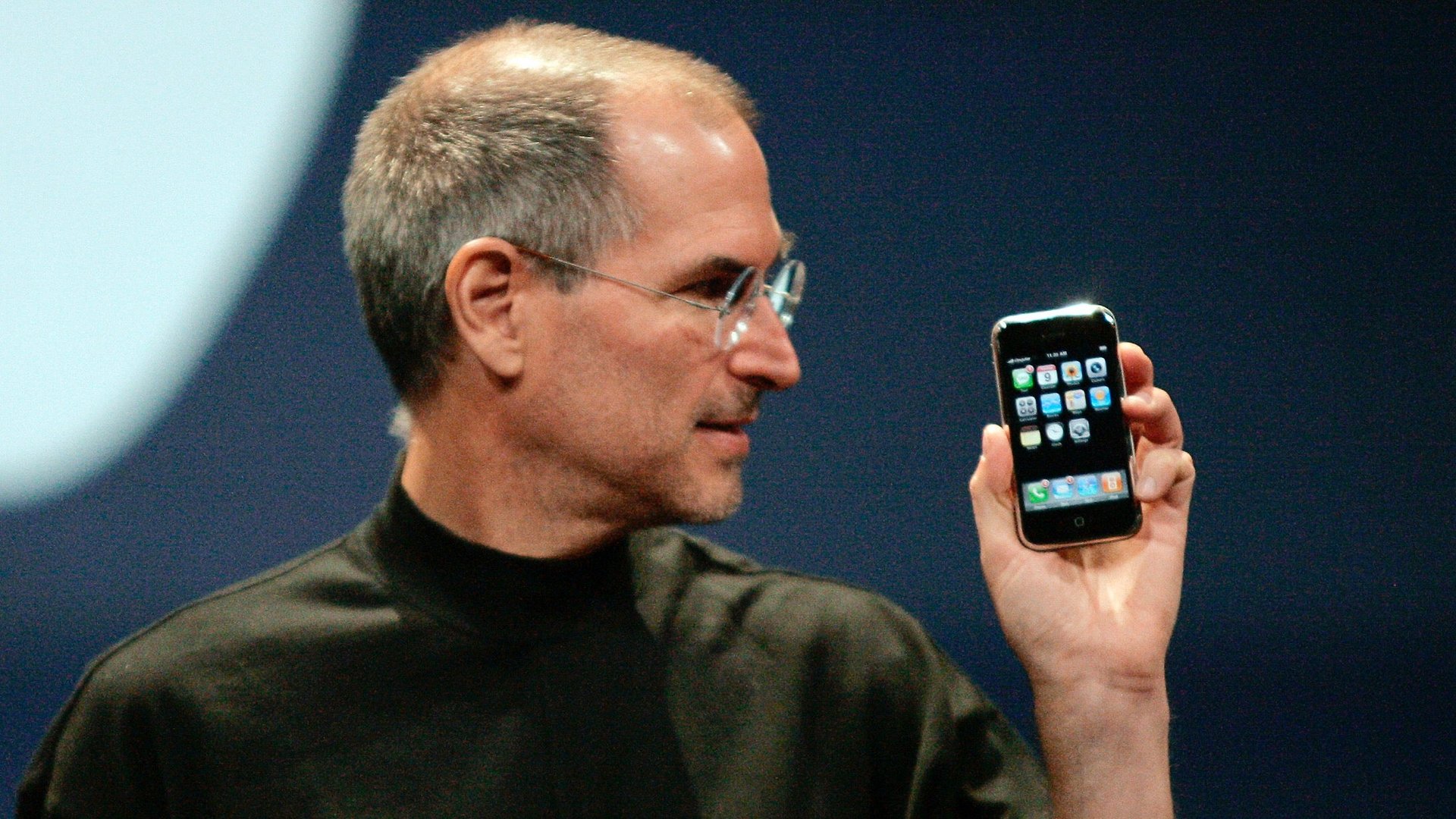No one could’ve guessed just how important the iPhone would be
Ten years ago, thousands of regular people around the world listened to a stern man in a mock turtleneck talk about a phone and decided to wait outside for hours on end to buy one.


Ten years ago, thousands of regular people around the world listened to a stern man in a mock turtleneck talk about a phone and decided to wait outside for hours on end to buy one.
That phone, along with its successors and competitors, eventually upended how we communicate. There are now billions of people that use smartphones as their main method of connecting with the world and accessing its information. The iPhone’s impact has been clear: It simplified the way we look at the web and put the internet into the pockets of billions around the world. The iPhone spurred countless competitors, effectively creating the Android operating system that Google bought (and which is now the most popular operating system in the world) and the ever-growing market of me-too devices, as well as a design language that’s made it truly difficult to innovate in the smartphone world.
When Apple opened up and let third-party developers make apps for the device in 2008, it created an industry that has generated over $70 billion for app-makers, the company said earlier this month. The iPhone has also helped turn Apple into into one of the richest companies of all time, sitting on a cash pile of roughly $250 billion.
Apple has sold over 1 billion iPhones since the product first launched on June 29, 2007, as well as millions of iPads and Apple Watches—other mobile devices born out of the smartphone’s success. But there was a time when the iPhone was a singularly unique experience, when people camped out outside Apple stores to pick one up, when even holding one would illicit envy in all those nearby.
In mid-June of 2007, a few technology reviewers were given access to iPhones before the product launched. And as most technology reviews are rather formulaic, pretty much every single one ended with a pithy paragraph on what they thought of the phone or what the new phone meant for the future of technology. Some even hazarded guesses at what a device like this could mean for Apple, or the world—although it’s unlikely any of them could’ve guessed that the iPhone would become arguably the most popular tech product ever made.
Here are a few excerpts from that month:
David Pogue, writing for The New York Times, was blown away:
But even in version 1.0, the iPhone is still the most sophisticated, outlook-changing piece of electronics to come along in years. It does so many things so well, and so pleasurably, that you tend to forgive its foibles.
In other words, maybe all the iPhone hype isn’t hype at all. As the ball player Dizzy Dean once said, “It ain’t bragging if you done it.”
Walt Mossberg, at The Wall Street Journal, was a bit more reserved:
Expectations for the iPhone have been so high that it can’t possibly meet them all. It isn’t for the average person who just wants a cheap, small phone for calling and texting. But, despite its network limitations, the iPhone is a whole new experience and a pleasure to use.
Scott Gilbertson, at Wired, didn’t think it was worth the (admittedly very high) price:
Final verdict: There’s no denying the wow factor, but overall the iPhone isn’t worth the money. For $300 I’d give it the thumbs up, but at $600 you’re better off with something else for half the price.
PCWorld got on the bandwagon of “wait until the next iPhone comes out” very early, suggesting we all keep our PDAs (personal digital assistants, like the Palm Treo, the smartphone darling of the day):
So should you buy an iPhone? Sure, if you want to own a beautifully designed phone/Internet device/music player and are willing to put up with some occasionally exasperating problems. Everyone else, especially those who already rely on a PDA phone for messaging, should probably wait.
Jason Snell, at Macworld, saw a glimpse at the future of smartphones:
To put it more simply: The iPhone is the real deal. It’s a product that has already changed the way people look at the devices they carry in their pockets and purses. After only a few days with mine, the prospect of carrying a cellphone with me wherever I go no longer fills me with begrudging acceptance, but actual excitement.
Lev Grossman, at Time, really seemed to get where Apple could be headed:
Apple and its partners are just beginning to figure out how to develop for this thing. Look at the iPods of five years ago. That monochrome interface! That clunky moving touchwheel! They look like something a caveman whittled out of a piece of flint using another piece of flint. Now imagine something that’s going to make the iPhone look like that. You’ll have one in a few years, and it’ll be cheaper, too. If you’re not ready to think different, then think ahead.
(It’s worth pointing out that USA Today, CNET, and Engadget, who all also put up early reviews of the original iPhone, did not have any closing remarks or insights to add on the future of mobile computing—their reviews just ended with some specs.)
But whatever their take on the consumer electronics device, the reviewers’ comments seem to have held up a bit better than former Microsoft CEO Steve Ballmer’s, who mocked the iPhone’s price tag and lack of appeal to businesspeople. (After spurring the personal-computer industry, Microsoft has been criticized for completely missing the mobile revolution Apple kickstarted.)